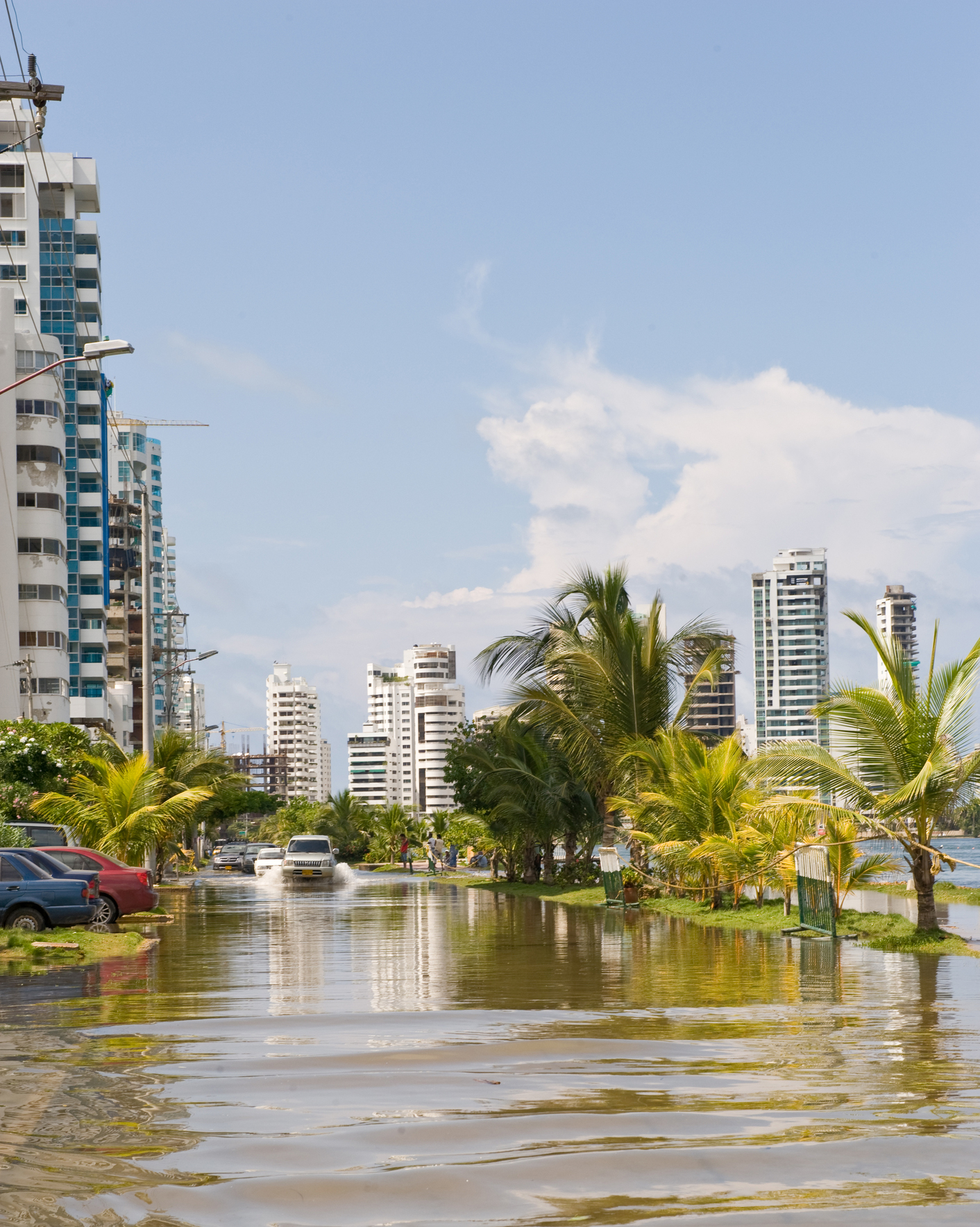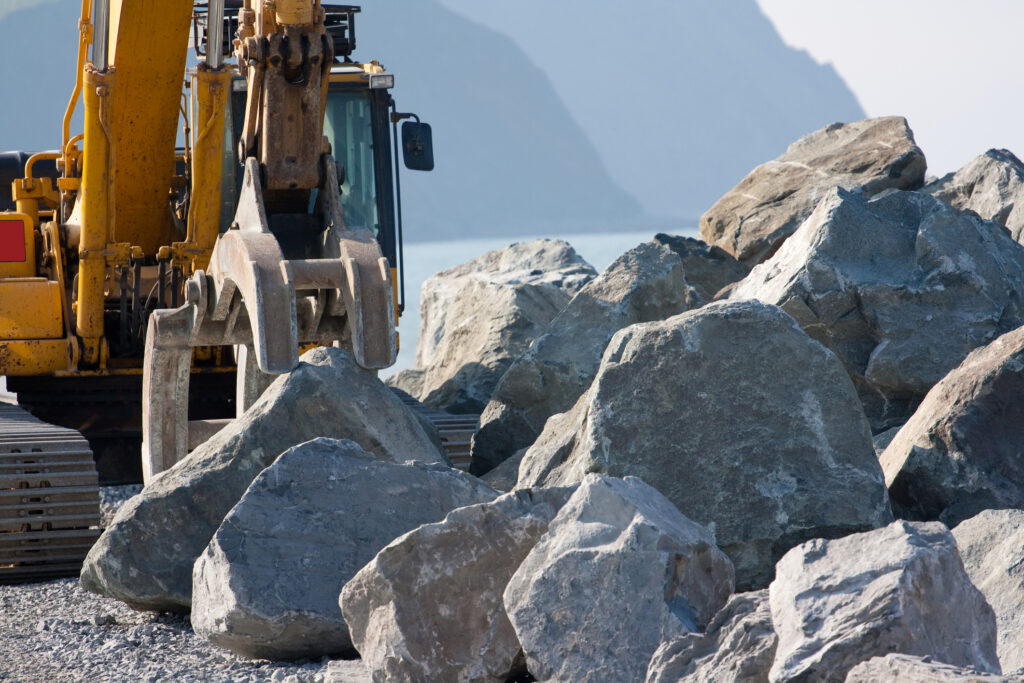The sea is rising, fast
By Mike Jarrett
2017, June 1: The fear that sea levels will rise and wipe out whole communities and industries has become reality. Sea levels are rising rapidly and now there are numbers, measurable rates, to prove it.

There may be differences as to the rate of the increase but there is global consensus: sea levels are rising and at an accelerated rate.
Scientific predictions range from conservative to aggressive. Some predictions estimate sea levels could increase by as much as one metre (three feet) above present levels before 2100. One recent study predicts that sea levels could be twice that, two metres (6ft.6in.) by the end of the current century. This latter prediction, scary to say the least, was published by the Climate Institute1.
Regardless, it is already 2017. There is not a lot of time to plan and then act.
Here is what we know
- With just a one metre increase in sea levels, 35 of 44 CARICOM seaports and their surrounding port lands would be under water.
- Sea levels have been increasing at twice the average rate as that recorded over the past 80 years. Scientists in the service of a broad range of regional and multi-lateral organizations and agencies agree on this fact. National Geographic summarised the data in a recent edition: “Core samples, tide gauge readings, and, most recently, satellite measurements tell us that over the past century, the Global Mean Sea Level (GMSL) has risen by 4 to 8 inches (10 to 20 centimetres). However, the annual rate of rise over the past 20 years has been 0.13 inches (3.2 millimetres) a year, roughly twice the average speed of the preceding 80 years.”
- The cause of sea level rise is anthropogenic climate change (i.e., global climate change caused by human interaction with the environment.)
- The impact of sea level rise will not be felt in the same manner or degree in every country or locale. Areas with the same water level increase may experience totally different social and economic impacts. However, the highest increases will be close to the Equator, which puts the Caribbean and Latin America at great risk
- Sea level rise will continue, although collective global action may slow the rate. Even with the most optimistic projections of global reduction in production of greenhouse gases, given current levels in the atmosphere ensure, the rise in sea levels will continue.
- Most major Caribbean cities are built on plains close to the major seaport and are therefore at great risk.
Three causes
There are basically three causes of sea level rise, according to National Geographic: (a) thermal expansion; (b) melting ice at the Earth’s polar caps and glaciers; and (c) ice loss from Greenland and West Antarctica.
(a) When water heats up, it expands. This lesson is taught early in a child’s academic life with a beaker and Bunsen burner. It is estimated that as much as half of the increase in sea level rise recorded during the past century was due to the world’s oceans getting warmer.
(b) The increased warming of the Earth’s atmosphere, depicted in dramatic video documentaries, has caused the melting of some the planet’s largest ice formations. Massive ice shelves collapsing into polar oceans; graphic images of shrinking polar ice caps all testify to a massive and continuing global ice melt. Normally, these huge ice caps and glaciers at the poles will melt during summer months but snow from evaporated sea water replenishes the ice mass during the winter. As National Geographic (Global Warming: Sea Level Rise) points out: “… persistently higher temperatures caused by global warming have led to greater-than-average summer melting as well as diminished snowfall due to later winters and earlier springs. This imbalance results in a significant net gain in the ratio of runoff to ocean evaporation, causing sea levels to rise.”
(c) Similarly, increased heat on the planet is causing the ice that covers Greenland and Antarctica to melt rapidly. Scientists are of the opinion that water from melted snow above and sea water from below is seeping below the ice sheets of both Greenland and Antarctica creating a lubricating effect that makes them move more quickly into polar oceans.
Impact on Caribbean
With relatively few exceptions, most major cities of the Caribbean are built at or just above sea level. The highest population densities are in the major cities and towns close to the shore. Rising sea levels will therefore have far-reaching social implications. The Caribbean region depends heavily on tourism, this industry representing a significant percentage of each country’s national economy. The World Travel and Tourism Council (WTTC) estimated that tourism represents just under 15% of Gross Domestic Product (GDP) and 13% of employment in the Caribbean. But the regional figures tend to hide the reality. Tourism accounts for than 25% of GDP in most countries and more than 50% in many.
The Caribbean’s main tourist attractions are the breath-taking vistas of the Caribbean Sea; magnificent coral beaches and some of the most fascinating submarine reefs on Earth. Most of the infrastructure and superstructure for tourism, including airports are at, or about, sea level and by the coast.
In 2010 more than 670 major resorts in the CARICOM group of countries were listed for an analysis by Caribsave and the United Nations Development Programme (UNDP). Of that number, resort infrastructure of 149 were at risk to a one metre increase in sea levels. However, the study2 noted that, when the beaches were taken into account, “… a much greater proportion of damage would be lost to inundation and accelerated erosion well before resort infrastructure was damaged.”
Major resort properties at significant risk to a one metre increase in sea levels were 73% in Belize; 64% in St. Kitts and Nevis; 46% in the Bahamas and 33% in Trinidad and Tobago.
Tourism however would not be the only economic sector to be devastated. Transportation would be severely affected by a one metre increase in sea levels. With a one metre increase in sea levels, one of every three airports within the CARICOM group of countries would be inundated; more than 550 kilometres of roads would be under water, with entire communities marooned.
Agriculture was considered less vulnerable. Sandy shorelines are not choice land for agriculture and so farming is usually done in the hinterlands. Notwithstanding, although loss of crops and farm lands would be relatively minimal, indirect impacts relative to irrigation and food supply would affect the agricultural sector.
As sea levels rise and salt water reaches farther inland destruction and devastation will multiply. Destructive erosion of infrastructure and machinery will slow production. Flooding of wetlands and spawning habitats will destroy tens of thousands of species – flora and fauna. As sea levels rise, there will be flooding of aquifers, reducing availability of drinking water. Agricultural soil will become increasingly contaminated and food production will decline.
Tropical storms and hurricanes will generate devastating storm surges, ravaging what remaining infrastructure is left in already drowning cities.
Social unrest and human tragedy will mount as hundreds of thousands of people are forced to abandon coastal areas that they have occupied for generations but which are now vulnerable to flooding. Low-lying islands which now enhance a tourist destination’s product will be largely under water while some will completely disappear.
Preparation and strategy
Most predictions say the warming of the planet will continue and is likely to accelerate.
“Climate change and sea level rise are already threatening our viability and even our existence as sovereign nations,” said Baron Waqa, chair of the Alliance of Small Island States (AOSIS), at the 2014 United Nations Climate Summit in New York City. And even sceptics who had previously denied the reality of climate change have taken a different attitude in recent years. Cities along California’s coast, many of which had dismissed reports of climate change or had lagged in preparing for rising sea levels, are making plans to fortify their beaches, harbours and waterfronts.
“Communities up and down the coast have begun drafting plans to build up wetlands as buffers against rising tides, to construct levees and seawalls to keep the waters at bay or to retreat from the shoreline by moving structures inland.” [Los Angeles Times, March 6, 2011.]

Ports of the Caribbean need to turn talk into action. Now is the time to identify and protect natural barriers; measure and document vulnerabilities; and, study alternatives. Artificial barriers must be carefully inspected and assessed for upgrading and strengthening.
Reviews of current zoning laws in the context of climate change and rising sea levels must be initiated. Similarly, a complete review of architectural and engineering design and construction standards must be undertaken. And above all, governments need to initiate and sensitise populations to the risks and threat of rising sea levels.
Planning for this reality will take a long time. And it will take even longer to implement those plans. Even the most optimistic predictions suggest that major, capital-intensive solutions will be required.
It is already 2017. There is not a lot of time. []
_______
1 Founded in 1986, the Climate Institute was the world’s first organization focused solely on climate change. Since its founding, the Institute has been instrumental in moving climate change onto the international agenda, fostering collaboration between developing countries and richer nations, and in launching and implementing pioneering studies and initiatives on subjects
2 Quantification and Magnitude of Losses and Damages Resulting from the Impacts of Climate Change: Modelling the Transformational Impacts and Costs of Sea Level Rise in the Caribbean (Full Report) produced by Caribsave and the United Nations Development Programme (UNDP), 2010.






